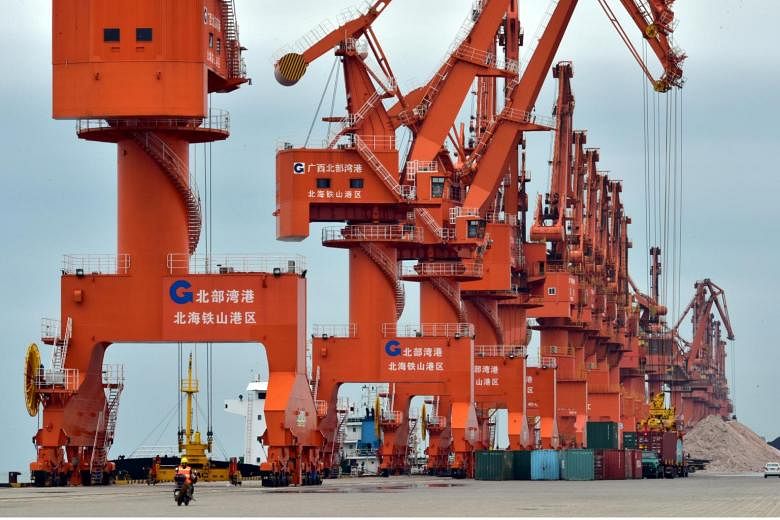BEIJING (REUTERS) - China posted stronger-than-expected June trade figures on Thursday (July 13), bolstered by firm global demand for Chinese goods and robust appetite for construction materials at home, but local curbs on lending could weigh on imports later this year.
Exports from the world's second largest economy rose 11.3 per cent from a year earlier, while imports expanded 17.2 per cent, both beating analysts' expectations, official data showed.
While exports benefited from solid demand for electronics and industrial goods, a growing trade surplus, particularly with the United States, may add to trade tensions as US President Donald Trump seeks to boost activity in his country's manufacturing sector.
An increase in trade between China and nuclear-armed North Korea in the first half of the year could also add to diplomatic pressures between Beijing and Washington.
Analysts say economic and political risks could undermine much of the strong trade momentum seen in the first half of this year.
"Looking ahead, we expect export growth to slow on uncertainties in external demand due to rising geopolitical risks and the stronger yuan-US dollar exchange rate in the first half of 2017," Nomura researchers said in a note after the data release.
China posted a trade surplus of US$42.77 billion in June, slightly above analyst forecasts for a surplus of US$42.44 billion and wider than May's US$40.81 billion.
Analysts polled by Reuters had expected June shipments from the world's largest exporter to have risen 8.7 per cent, in line with May's growth. Imports were forecast to have climbed 13.1 per cent, easing from the unexpectedly strong 14.8 per cent jump in May.
The country's demand for imports, particularly for industrial commodities such as iron ore and coal used to feed a construction boom, has remained robust in recent months. This is thanks mostly to resilient real estate demand in smaller Chinese cities with lax property rules as authorities are keen to clear a housing glut.
However, analysts say a slowdown in demand for materials from abroad may already be taking place.
"Looking ahead, exports should continue to do well given the relatively positive outlook for China's main trading partners," Julian Evans-Pritchard, China Economist at Capital Economics, said in a note. "But we are sceptical that the current pace of imports can be sustained for much longer given the increasing headwinds to China's economy from policy tightening."
China's exports denominated in yuan rose 15 per cent in January-June from the same period a year earlier, while imports jumped 25.7 per cent during the period.
Many economists still expect Beijing's intensifying crackdown on unscrupulous lending and a cooling property market to translate to slower growth after a surprisingly solid first quarter.
China publishes its second quarter economic growth numbers on Monday. Economics polled by Reuters expect gross domestic product growth to have cooled to 6.8 per cent from 6.9 per cent in the first quarter as Beijing tightens the screws on financial risks.
Authorities have continued their campaign to reduce financial leverage in the economy while also maintaining stability in markets.
China's trade surplus with the United States was US$25.4 billion in June, up from US$22.0 billion in May, official data showed, and its widest since October 2015, according to a Reuters calculation.
While US demand remains robust, concerns of possible trade frictions between the United States and China appear to be back on the radar. Trump has described the trade imbalances between the two countries as a "very, very big issue" that he would address.
Washington is also investigating aluminium imports from China under the rarely used section 232 of the Trade Expansion Act of 1962 that allows restrictions on imports for reasons of national security. The administration is conducting a separate investigation into steel.
The world's two biggest economies started their 100 days of trade talks in April and agreed in May to take action by mid-July to increase access for US financial firms and expanding trade in beef and chicken among other steps.
Senior US and Chinese officials will hold a U.S.-China Comprehensive Economic Dialogue in Washington on July 19, which will be the first covering economic and trade issues in a new format for US-China dialogue.

